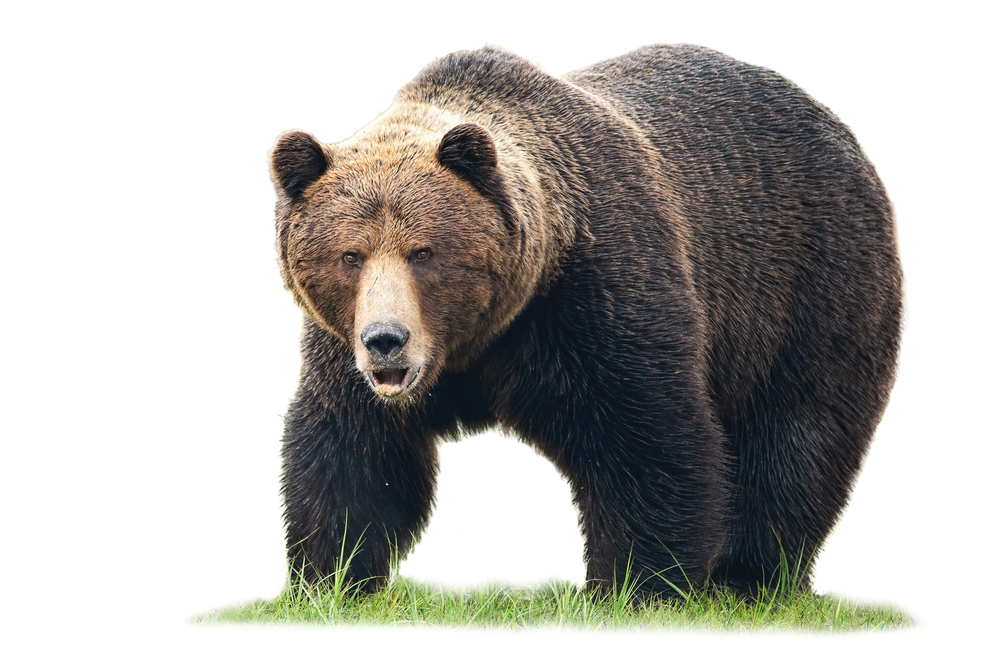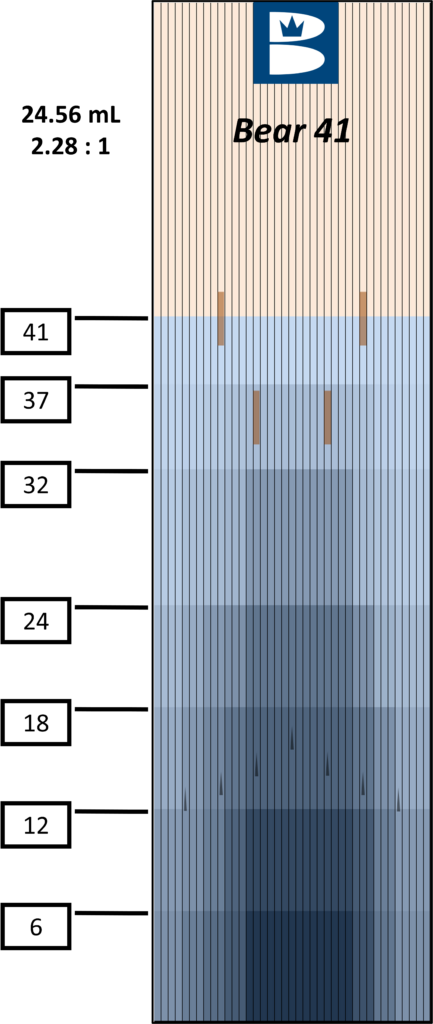
No matter what lane you bowl on, you’ll have to figure out how to read your bowling ball's performance on the lane based on how the lane was oiled. The oil spread helps to maintain the flooring and creates challenging conditions for bowlers because, after all, bowling is sport.
After the lanes have been used and all the bowlers are done, lanes are first cleaned, and then the alley's crew will typically apply oil to the lane using an oiling machine. This oil provides the floor with protection and places invisible obstacles to keep you on your toes.
For example, the PBA Bear Pattern, will be oiled heavily in some areas and less in others, keeping your ball from hooking much. Other areas have diminished friction, which can lead to a bowler’s ball deviating from its intended course and going into the gutter. This can be extremely frustrating if you don’t understand what’s happening.

Bowlers also need to adjust their throws throughout any game to keep up with how the oil pattern will shift throw after throw of each ball and bowler. After all, oil isn’t stagnant and will spread based on how the balls move through it as each time a ball is released.
Areas that weren’t covered in any oil will suddenly have oil, and other super oily areas may become drier. Keep all of this in mind as you progress through this article. It’ll make future explanations easier to understand.
Remember the function of oil as your read about conquering PBA Bear Pattern.
Contents
PBA Bear Pattern- What Is It?
The PBA Bear pattern is widely considered one of the most challenging patterns to bowl. It’s also one of the more recent patterns produced by the PBA, having been named and officially added within the last decade. The Bear pattern was an addition to the already challenging animal patterns, including the new Badger and Wolf patterns.
The PBA Bear pattern is a 41-foot oil pattern with a total oil volume of 29.85 ml. 18.1 ml of that is forward oil and 11.75 ml of it is reverse oil. The pattern starts with combined oil from the foul line to about the 25-foot mark, and it extends almost completely to the gutters on each side.
That combined oil tapers in a bit from the 13-25-foot mark. There isn’t much oil at all after 25-foot mark, but you should note that there’s some reverse oil slathered on up until the 41-foot mark.
The Bear pattern carries with it a steep learning curve for even the most talented bowlers out there, as it impacts every part of a ball’s journey down the lane. Oil patterns can be tricky for bowlers to navigate and master, and the Bear is one of the top ones frequently mentioned by experienced bowlers.

How To Play on the PBA Bear Pattern: Tips and Tricks
If you’re brand new to bowling or only have basic knowledge of the game, graphs, and charts might not be the best way for you to understand this pattern. Here are some straightforward tips to help you out should you take this pattern for a spin:
- To start, if you’re a straight bowler, don’t play your throw anywhere near the gutter. If you do, your ball will likely end up in there, as you’ll have difficulty controlling where your ball goes. This applies especially to areas with little oil.
- Because the oil on the lane isn’t going to stay put after you bowl on it, you can try to get it to break down throughout the game. While a predictable breakdown of oils isn’t guaranteed, it can help you to have more control over your ball as the game progresses. Your awareness of how the oil behaves will be your advantage. This applies to both current and future games.Bowling Tips on Reading Lanes: Recognizing Oil Pattern Breakdown to Keep You Striking!
- Don’t bowl wide – that’s a recipe for gutter balls with this pattern. Targeting the second arrow on the lane works for many and can keep you away from the gutter.
- Pay special attention to your wrist as you release the ball. By letting your wrist relax and keeping proper form, prevents shakiness which can result in a ball that quickly veers off course.
- Use a urethane or reactive ball if you’re not a straight bowler. It’ll give you some back-end hook potential so you can get into the pocket.
- Be patient. The beginning of the game is almost always the toughest with a new or difficult pattern. But as you continue loading games (playing), the layout of the oil and how your ball moves through it becomes more predictable.
- While strikes are the ultimate goal in every game, spares are pretty respectable, especially when bowling the Bear Pattern. Even if you normally hook the ball, a spare ball and a straight throw can help you pick up some spares.
- Use the rule of 31 if you normally hook the ball. It is when you subtract 31 from the length of the pattern (the Bear’s length is 41) to get the board you should aim for the ball to break from. 41 minus 31 is 10. So, pretend that the #10 board is the gutter to keep your throw narrow enough. If you throw the ball just right, it will begin to hook at the #10 board and hit the pins at the sweet spot.
Don’t expect a great game or a high score if you don’t have any experience bowling with different patterns – and the Bear pattern explicitly. Open yourself up to making errors and figuring out this difficult pattern based on our eight helpful tips.
How to Beat the Bear: The Ball, and Both Physical and Mental Skills
For anyone just getting into bowling, the idea of having to master the Bear pattern is understandably intimidating. So, you'll need to select the right balls, have the physical skill and the mental acuity required for patterns like the Bear isn’t something a bowler achieves overnight.
Yet the best way to learn about bowling, one of the most challenging oil patterns around, is to play on it over and over again, week after week, to master it. Practicing may not make your game perfect, but it does help to make your game “better.”
This isn’t a typical house pattern, so you shouldn’t have to worry too much about it when you are at your local place. Instead, spend time working on your basic bowling skills, including your approach, swing, and release of your ball. Then, when you do come face to face with a challenging oil pattern, you’ll be as prepared as you can be to overcome it.
Suggested balls for PBA Bear Oil Pattern 41:
Begin paying attention to the way your ball responds to your lane conditions. Within a short time, you'll notice patterns and how they change over the course of a game.
These are the tools you’ll use as you grow and advance in the sport. Practice, form, and observation are at the heart of every bowling success story.
Related Articles
To hear that the PBA Bear pattern is considered one of the most difficult to play might scare away some bowlers, but it can be conquered. First, make sure you work to get the fundamental skills you need to tackle this oil pattern.
After hanging around the bowling alley or watching tournaments, you’re likely to hear about oil patterns from avid or professional bowlers. These patterns have a monumental impact on your shots and resulting scores. Other Brunswick animal patterns are shark and cheetah.
If you want to refine your skills, you’re doing the right thing – learning more about these patterns. Today, we’ve shared a look at the PBA Bear Pattern and revealed to you everything you need to know about it.
So, take a visit to your local alley and begin working on mastering bowling this Bear of a pattern. Good luck!
Kira Byrd, a Certified Fraud Examiner, holds a B.S. in Accounting from the University of Alabama at Birmingham. With a passion for bowling from her childhood, Kira has poured her expertise and personal experiences into creating and nurturing Bowling For Beginners. Kira's mission is to meet new bowlers where they are and guide them toward consistently achieving higher scores. With a focus on skill development and strategic techniques, she empowers readers to take control of their game and unlock their true potential.
Bowling For Beginners embodies strict editorial integrity, ensuring reliable and unbiased information. Kira's commitment to delivering valuable insights and practical strategies is reflected in every article. Here's an explanation of our editorial policy and how we get money.








